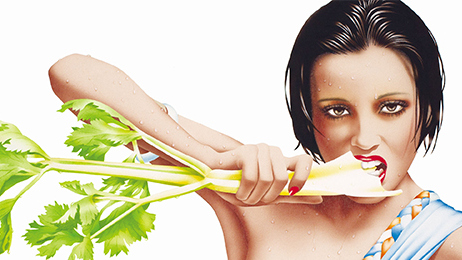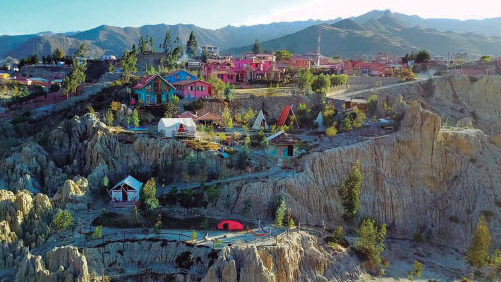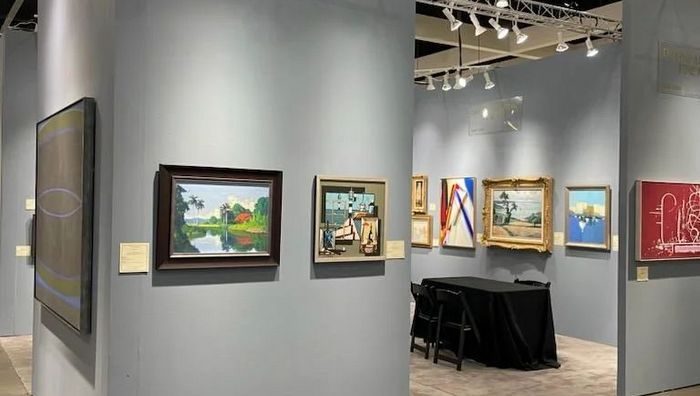Earlier today I skimmed through my archives and I drew out not one but four files at the same time. In the beginning, I’d thought about referring to the ties that once existed between two Caribbean artists: Dominican Jaime Colson (1901-1975) and Cuba’s Mario Carreño (1913-1999). However, as I was ready to sit down and start writing, I realized the story was twice as much complicated and that two more artists could make it a foursome: Cuban Mariano Rodriguez (1912-1990) and Mexico’s Manuel Rodriguez Lozano (1896-1971). Thus, I also made up my mind to limit myself to the 1936-1938 period and begin to shake information around, relate facts and drum up others I couldn’t trace it time.
Over the past 11 years I’ve been delving into the work of Mariano Rodriguez, therefore I was no stranger to the many references about the influence that Manuel Rodriguez Lozano could have exerted on the Cuban artist’s own work during his stay in Mexico from 1936 to 1937. He was his master professor, and so he recognized it during an interview I made for the Revolution and Culture magazine in the late 1976. However, we’ve never had the chance of displaying the works of the two of them in a single exhibit. When we look at some of the Mexican artist’s pieces, like “Il verdaccio”, 1935, “El coloso”, 1936 or “Retrato de Tebo”, 1936, we may immediately recognize Lozano’s influence on Mariano, though the quickness with which the student came up with a style of his own in a span of only of couple of years is also unassailable.
As Mariano was taking lessons in Mexico, Mario Carreño was arriving in that country with a view in mind to get updated in terms of Mexican art. He met Diego Rivera, jawed it up animatedly with “El Mastodonte”, and with Orozco and Tamayo. However, what actually left a stamp in his life –some sources claim– during his stay in that country was his encounter with Dominican painter Jaime Colson (1901-1975) who had returned from Paris and was eager to snoop around into the mural phenomenon.
Marilu Ortiz de Rozas, author of the book entitled A History of a Shattered Dream: The Mario Carreño Biography, gets a few words in edgeways about this meeting:
If there were in this world some kind of justice tribunal to check out on the consequent distribution of rewards to those who can show their merits and benevolence, Colson would have the right of making a claim. His personal history will be void if there were no mention to his being the mentor of Mario Carreño. He instructed him, formed him, piqued the Cuban’s interest in classic painting and urged him to head for Europe, to Paris…
In his memoirs, published in 1991, Carreño makes a brisk mention to this relationship and nothing points at any influence on him whatsoever.
Mariano, for his part, has not left too many footprints behind him. We barely know about his “Mexican” work. Indeed it’s really scarce and we notice that Colson and Mariano coincided in Mexico and that the Cuban artist’s work between 1938 and 1939 has only a few contacts with the Dominican peer’s. I bring this up because a few months ago I was surfing www.artcuba.com and I chanced upon an interesting anonymous article dealing with whether Mariano received any influence from Colson. The comment struck my attention because, to the best of my knowledge, such a topic had never ever turned up before. Did Mariano meet Colson in Mexico? We possess no information about that. What we do know for sure is that the Dominican artist traveled to Cuba in 1938 and set up quite a large exposition of his artworks at the Lyceum. The cover of the catalog features a portrait that could somehow be related to the work of the Cuban artist.
Critic Ramon Guirao writes in Grafos magazine about Jaime Colson and refuses to label the painter as a neoclassic, downplays any surrealist suggestions and puts out half a dozen drawings and paintings made by the artist. Yet what we basically see in them are metaphysical ambiences inhabited by characters, all that much splayed with well-defined post-cubist traces. It suddenly enters my mind to look for Ernesto Gonzalez Puig’s file, a Cuban painter who showed similar artworks at the Lyceum back in 1934. Come to think of it, I prefer not to because a fifth name would have made this unraveling effort far messier.
A curious note is that Carreño mentions in his memoirs that Colson, Carreño and Max Jimenez (see A Tico in Havana, Art by Excelencias, issue 1, 2008) left Havana for Paris aboard the same vessel in 1938, so the chain went on and on all the way to Paris. For her part, Marilu writes that the three of them exhibited at the Berheim Gallery because the catalog makes no reference to that and the cover just reads, “Exposition Carreno (sic). Peintre cubain”. At his point, I’ve run out of documents and I pause for awhile. My question now, did Max Jimenez and Colson exhibited their works together with Carreño in Paris? Are there any pictures? I’m sure the answer lies in another archive or library. Let’s wait…
Bibliography
Carreño, Mario: Cronología del recuerdo, Santiago, Editorial Antártica S.A., 1991.
Exposition Carreno. Peintre cubain. MM Berheim-Jeune et Cie, Editeurs d’Art, Paris.
Gerón, Cándido: Enciclopedia de las artes plásticas dominicanas, Editora Tele 3, C. x A., Santo Domingo, 1989.
Guirao, Ramón: “Jaime Colson”, Grafos, La Habana, mar. 1937, no. 4, pp. 22-23, ilus.
Ortiz de Rozas, Marilú: Historia de un sueño fragmentado. Biografía de Mario Carreño, El Mercurio Aguilar, Santiago de Chile, 2007.
Taracena, Berta: Rodríguez Lozano, Universidad Nacional Autónoma de México, México, D.F., 1971.



Previous publication A Tico in Habana
Next publication Cildo Meireles. Against hegemonic ideas in art
Related Publications

How Harumi Yamaguchi invented the modern woman in Japan
March 16, 2022
Giovanni Duarte and an orchestra capable of everything
August 26, 2020











